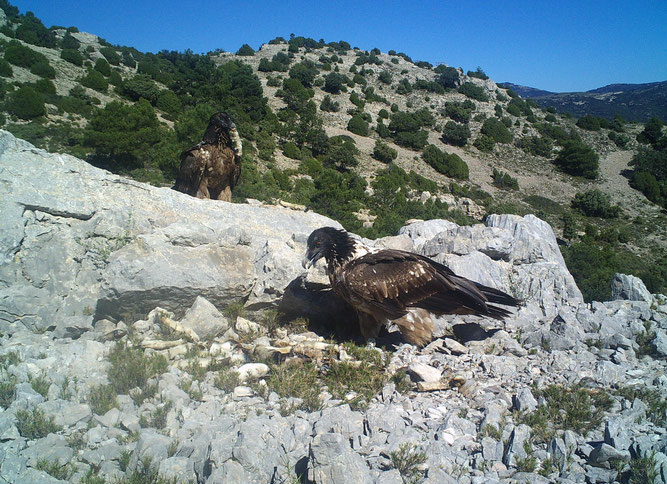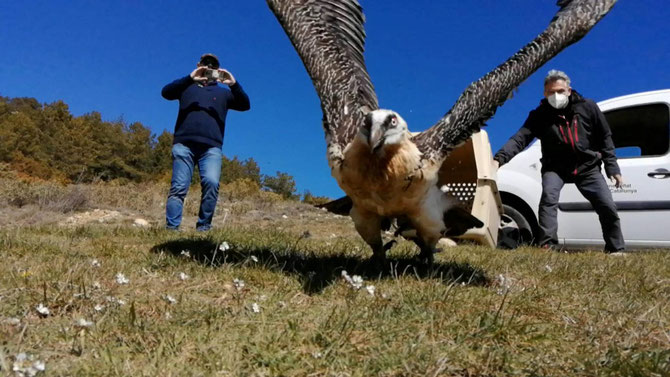Bearded Vulture To Maestrazgo
Latest reintroduction project to bring back the Bearded Vulture to Maestrazgo in Spain
- Homepage
- Pages
- Our Work
- Reintroduction And Restocking
- Bearded Vulture to Maestrazgo
Bruno Durán/Maestrazgo-Els Ports
The Maestrazgo region of Valencia, Spain, was historically a breeding site for Bearded Vultures, today whilst there is no resident population of the species it is regularly visited by birds from the Andalucian population in southern Spain. The project to reintroduce Bearded Vultures began in 2018 with the aim of establishing a wild breeding population that will bridge the populations in the Pyrenees in the north and Andalusia in the south.
THE FIRST RELEASES
Alòs and Amic were the first young captive-bred Bearded Vultures released back in the summer of 2018. For the coming years, the VCF aims to assign release 2-3 captive-bred birds annually to this project for release, boosting the reintroduction efforts.

To establish a new wild breeding population of Bearded Vultures in Maestrazgo region of Valencia, Spain, we here at the Vulture Conservation Foundation (VCF) are working with our partners on the project, the Generalitat of Valencia, in collaboration with the Autonomous Communities from Aragón and Catalonia, the Spanish Ministry of Agriculture, Fish, Food and Environment on a series of conservation actions. Starting in 2018, captive-bred Bearded Vultures are being released at specially constructed nests in the mountains of the Parque Natural de la Tinença de Benifassà. In a unique experiment the team, in close consultation and collaboration with us will translocate adult non-breeding or floater birds from the population in the Pyrenees to the Maestrazgo region to test how effective this method is and any effects on the reproductive productivity of the Pyrenean population.
As part of the project, to better understand bird movements around the region, the released Bearded Vultures will be monitored using small satellite transmitters fitted to their backs that send location data over the mobile communications network. To encourage movements of birds to the region, a series of supplementary feeding stations will be created.
TRANSLOCATING ADULT AND FLOATER BEARDED VULTURES
The Pyrenean population’s demographic evolution has increased to the point where the population is suffering from density-dependent productivity depression. Therefore, teams from the Autonomous Governments catch, tag, and release adult birds from the Pyrenees to determine whether they belong to any breeding unit after tracking their GPS movements and behaviour for a year. If they are floater (non-breeding) birds, the team tries to catch and translocate them to Maestrazgo. Since Maestrazgo is only about 300 km from the Pyrenees, this experiment received the go-ahead to see if it works, allowing the specimens to return to the Pyrenees if they do not adapt to their new habitat. Since this is an experiment, only a low number of birds will be translocated, and after analyzing the results, the project will decide whether to continue or stop.

The project is led by the Generalitat of Valencia, in collaboration with the Autonomous Communities from Aragón and Catalonia, the Spanish Ministry of Agriculture, Fish, Food and Environment and the us here at the Vulture Conservation Foundation.



Over the course of the reintroduction project, regular newsletters are being published by Parque Natural de la Tinença de Benifassà.